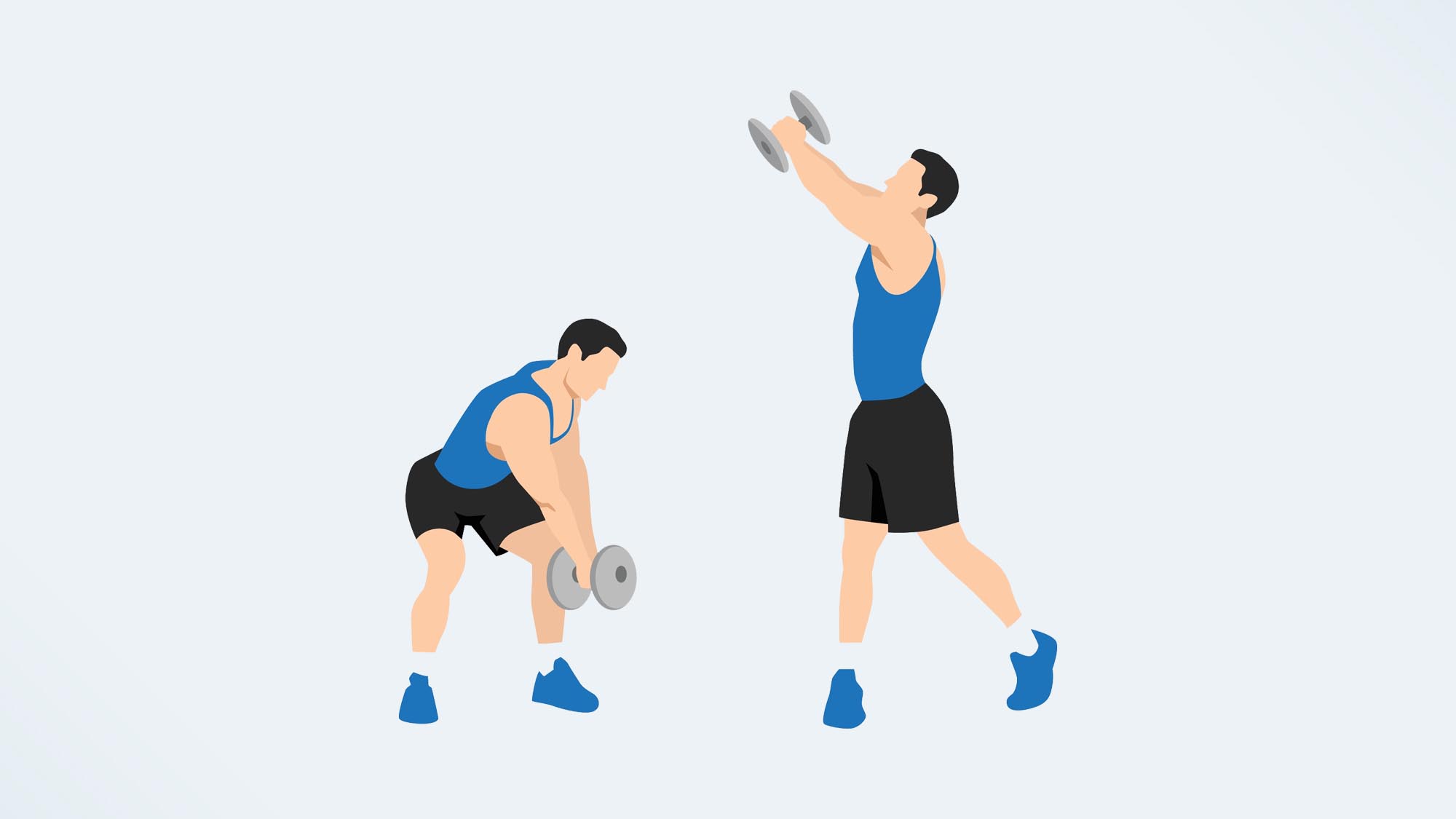
The fitness industry is an ever-changing beast with hundreds of trends and fads coming and going fast than you can say “high-intensity interval training”! But there are some exercises that stand the test of time, no matter what. One such exercise is the weighted woodchop — a dynamic movement that targets various muscle groups while promoting overall stability and balance.
Inspired by the powerful motion of — you guessed it — chopping wood, this exercise involves a controlled twist and lift motion, not only giving total lumberjack vibes wherever it’s performed but making it an effective addition to any workout routine, since it works multiple muscles at the same time.
But what are the real benefits of adding a weighted woodchop to your workout routine long term, and what’s the proper way of performing it? Tom’s Guide spoke to Arj Thiruchelvam, UK athletics coach and owner of Performance Physique, to find out.
Weighted woodchop: benefits
The weighted woodchop exercise is a popular choice among fitness enthusiasts. But why? For one, it can benefit the body in more ways than one. By engaging specific muscles, including the core, back, and shoulders, the exercise strengthens key areas, promoting improved stability and posture. If done properly and regularly, it can also aid in reducing the risk of back pain and injuries, which — according to the World Health Organization, currently affects 619 million people across the globe.
“The particular benefits of doing this exercise include stabilizing the shoulder girdle and the spine,” explains Thiruchelvam. “The exercise requires numerous muscles such as the obliques and scapular stabilizers to work both concentrically and isometrically.”
Working out in this way is beneficial as it helps to increase functional strength and core stability, while balanced muscle development and enhanced neuromuscular coordination reduce the risk of injuries and improve joint stability.
What’s more, the weighted woodchop is a versatile exercise in that it can be integrated into just about any workout routine, whether it’s focused on bodyweight exercises or strength training. And since it only requires one of the best adjustable dumbbells or best resistance bands, it’s accessible to most people, no matter what their fitness goals are.
Sign up to get the BEST of Tom's Guide direct to your inbox.
Get instant access to breaking news, the hottest reviews, great deals and helpful tips.
How to perform a weighted woodchop
While executing a weighted woodchop is pretty straightforward, it requires proper form to ensure you’re not only getting the most out of the exercise but that it’s done safely, avoiding injury.
According to Thiruchelvam, here's how the weighted woodchop should be properly performed, step by step:

- Step 1: Stand with your feet shoulder-width apart and hold a dumbbell or cable machine handle in both hands at shoulder height. Position your hands at one end of the weight, keeping your arms extended.
- Step 2: Maintaining only a slight bend in the elbow, rotate your torso to one side, bringing the weight down diagonally across your body until it reaches your hip. Keep your core engaged throughout the motion.
- Step 3: Pause for a moment, then rotate your torso back to the starting point, lifting the weight back up across your body and diagonally overhead, extending your arms. As you do this, engage your core and oblique muscles.
- Step 4: Complete the desired number of repetitions on one side before switching to the other side, performing the exercise in a controlled and deliberate manner to ensure proper muscle engagement.
Thiruchelvam advises performing three sets of 10-15 reps on a weight that allows you to perform the action smoothly, with sound technique.
Weighted woodchop: common mistakes to avoid
While the weighted woodchop exercise is fairly simple to perform, it’s still pretty common for people to make mistakes, which — if not avoided — could lead to discomfort or injury.
“Common errors include allowing the weight to slam in one position, not pivoting the back foot and risking injury to the knee,” says Thiruchelvam. “Also, don't try to progress too quickly, very often this will cause you to lift too heavy weights for your ability and to stiffen up.”
It’s also important to remember to breathe throughout the exercise, allowing oxygen to reach your muscles and stabilize your core.
Retaining a balanced posture is also crucial. Doing so will help you avoid any injuries. Be sure to keep your back straight, shoulders relaxed, and chin slightly tucked in throughout.
Weighted woodchop: variations
The great thing about the weighted woodchop is that it can be adapted to suit different people depending on their fitness level or what equipment they have available.
“Variations include changing the tempo of the movement, for example, in sports this is often an explosive movement to encourage rotational power,” explains Thiruchelvam. “I encourage my athletes to change the height of the cable to alter the stimulus, including working from low to high.”
Some popular variations on the conventional move include:
Alternating woodchop: Those who might find the full-weighted woodchop a little challenging can always try the alternating woodchop exercise. This involves lifting the weight diagonally across your body while alternating sides, which helps to engage your back muscles in a similar way but with way less tension.
Overhead woodchop: If the standard weighted woodchop isn’t quite challenging enough, you can always perform it starting with the weight overhead, and bring it down diagonally across your body.
Resisted woodchop: Another quick and easy way of spicing up the weighted woodchop is by introducing a little more resistance by using heavier dumbbells or a stronger resistance band to intensify the exercise.
The weighted woodchop exercise is not only a simple workout to follow, but it can be a rather powerful addition to any fitness regimen, offering those who commit to doing it regularly a range of benefits — from enhanced core strength and stability to improved posture.
But the beauty of this exercise is in its versatility. It can be switched up to suit just about any fitness level while also working multiple muscle groups to help improve strength. Just remember to prioritize proper form and alignment to maximize results and minimize the risk of injury.
More from Tom's Guide
Lee Bell is a freelance journalist and copywriter specialising in technology, health and fitness and how the latest innovations are shaking up the lifestyle space. From national newspapers to specialist-interest magazines and digital titles, Lee has written for some of the world’s most respected publications during his 12-plus years as a journalist.

